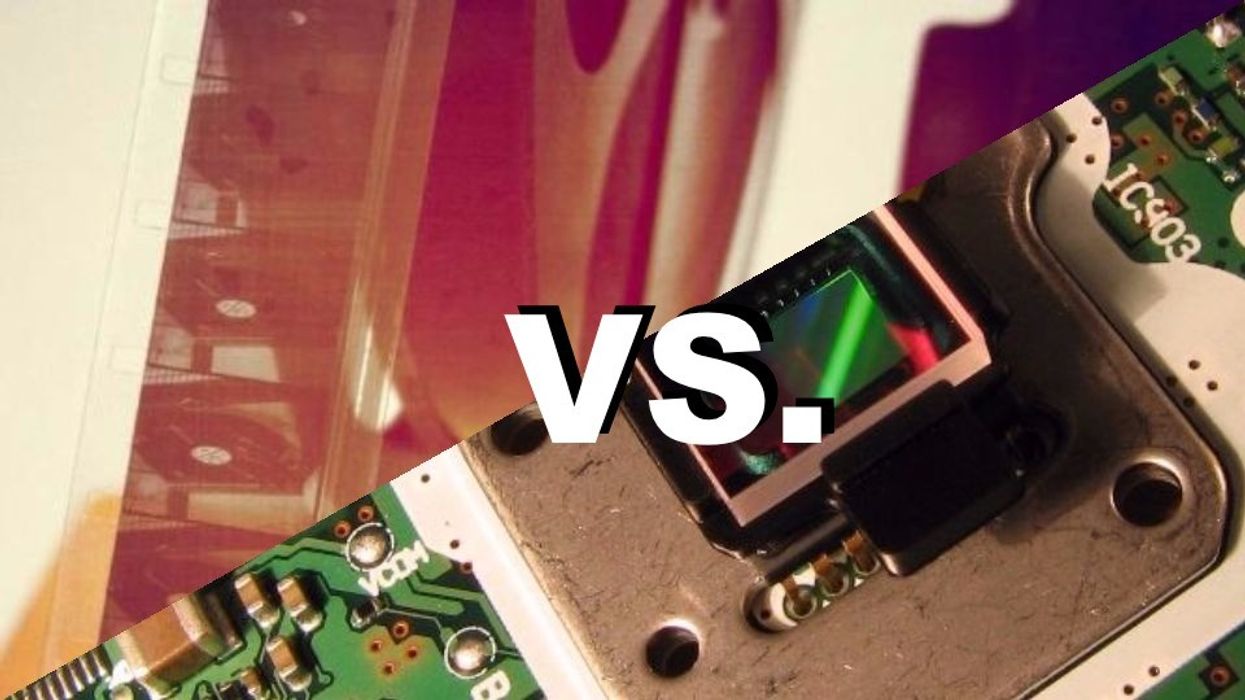The Debate is (Still) On: Top DPs Discuss the Differences Between Film and Digital
Which side do world-renowned cinematographers take in the battle between film and digital?

There's no denying that the topic of shooting on film versus shooting on digital is a source of real contention amongst filmmakers. Some die-hard fans of celluloid tout it as a living, breathing vessel for moving images, while those shooting on digital proclaim it the medium of the future. Regardless of where you fall on the spectrum, it's worth learning about what today's top cinematographers say about the great debate.
In this video from Cooke Optics, Sean Bobbitt (12 Years a Slave), Ed Lachman (Carol), John Mathieson (Gladiator), John de Borman (An Education), and many other DPs weigh in on the strengths and weaknesses of shooting on both film and digital, as well as why it doesn't actually matter which you choose.
Like anything, there are pros and cons of shooting on both film and digital. We could talk all day about the uniquely beautiful aesthetic of film—the film grain, the color, the overall look that digital itself has been trying to emulate for years. We could talk all day about the economy of digital—how filmmakers today can make films for next to nothing in a matter of months, weeks, or even days. However, it seems as though film and digital both have their major advantage and disadvantage.
What many of the DPs mentioned in the video was how film forces you to be present, to be principled and respectful of the moments being captured. Because digital affords you the freedom to just let the camera roll without having to be to scrupulous about what you shoot, film can make you a much more disciplined observer.
However, digital has become the great cinematic equalizer. Inexpensive digital cameras, memory cards, and data storage made it possible for anyone to pursue their dreams of filmmaking without having to go through the gauntlet of Hollywood. Digital is accessible and easy(ish) to use, and with each passing year, digital gets better and better in terms of resolution, color gamut, and dynamic range.
And because shooting on digital means having files ready to go into post almost instantly, that makes the thought of having to go through the whole costly process of acquiring film, processing it, and getting it digitized extremely unpleasant—especially if there aren't any labs in your area.
Still, digital, at this point in time, looks "digital", in fact, some of the "advantages" of shooting on digital, like capturing vibrant colors and super sharp images, seem as though they are actually disadvantages when it comes to image making. As Borman says,
The color spectrum is very different [on digital]. The color is a false color, it seems, on digital. You always have to pull back the color.
He goes on to say,
I don't think that images that are super sharp are necessarily more beautiful. For everything to be really sharp, does it make it more beautiful? I don't think so.
But, at the end of the day all the DPs agreed—the most important thing about shooting a film is not whether you shoot it on celluloid or digitally. The most important thing is the story. Period. It doesn't matter if you've got a beautiful Panavision 35mm camera or an ARRI Alexa if your story is lacking. So, get all fan boy if you want, but remember—there are pros and cons of shooting on both, and yes, film may be fading and digital may not be quite there yet visually, but when all is said and done, none of that matters if you've got a great story.
Source: Cooke Optics TV














